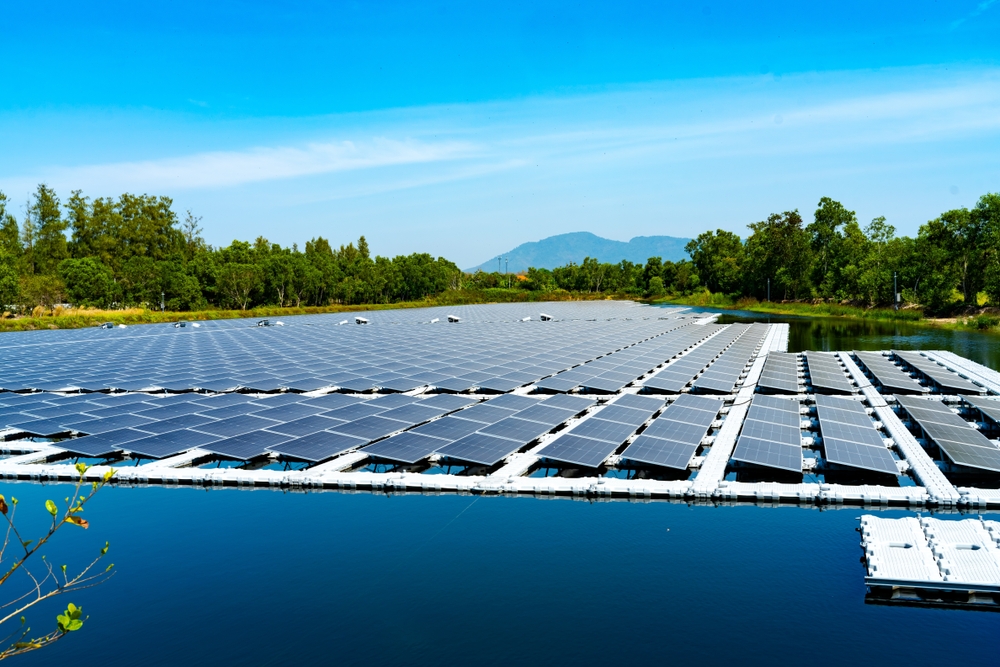
Data center developers face some tough questions as they struggle to secure electric supply in an increasingly tight market. Where will they find power? Should they rely solely on the grid? Or should they secure on-site power for all or part of their supply? What are the cleanest and most reliable choices?
And where does distributed energy fit in? Over 100 data center and distributed energy experts gathered on July 10 in Bend, Oregon, to tease out some of the answers.
Here’s some of what we learned from panel discussions and interviews with participants during and after “The Great Transformation: A Data Center and Energy Innovation Summit,” hosted by Cross Consulting, the Technology Association of Oregon, Xendee and Mayfield Renewables.
Microgrids and the value of phased development
Choosing which generation resources to use — solar, storage, small modular reactors, or another supply technology — is only one step. Data center operators also need to think about timing.
Adib Naslé, co-founder and CEO of Xendee, said that data center industry members should consider adding distributed energy resources (DERs) and other forms of generation in a phased, multi-year approach. Microgrids are often the best option for a phased approach because they are flexible and can accommodate new technologies as they are developed. Microgrids are also more cost-effective than grid power, which is often not immediately available for large loads. Microgrids can provide power more quickly.
A yet-to-be-released Xendee study examines different power options and finds that the most expensive choice would be to rely solely on the utility. It’s also the most carbon-intensive and fails to improve resiliency and redundancy. In one example, the utility-only case was the least economical, with a levelized cost of energy (LCOE) of $0.4704/kWh. That compares to a multi-year scenario phasing in resources that yielded 79.66% in operating savings and 8.69% reduction in emissions, with an LCOE of $0.0383/kWh.
Under the “multi-year” example modeled by Xendee, a grid-connected microgrid with DERs is a first step. Under this scenario, in 2025, the DERs include a 32-MW gas generator, an 18.2-MW electric chiller, a 26.2-MW absorption chiller, and 268 kWh of cold storage. In 2035, a 38-MW small modular reactor would be included in the microgrid, along with a 10-MW gas generator and a 12.5-MW electric chiller.
“I see a microgrid really providing the flexibility to work with new technologies in the future,” Naslé said.
Quickly deployed nickel zinc batteries
Another more immediate option for overcoming the power gap challenge is deploying nickel-zinc battery storage next to data center graphics processing units (GPUs), said Michael Klasen, director of business development at the systems division of ZincFive, which produces nickel-zinc battery storage systems.
Klasen discussed the company’s efforts to address a specific challenge: while training AI models, AI data center GPUs can intermittently require peak power — referred to as dynamic power — up to 50% more than the continuous maximum load. The load is intermittent because after meeting a peak power load, it’s important to pause and allow equipment to cool off.
“When you pause it, it’s hard to get the productivity you want, then you have to stand by and wait for it to cool off. We’re jumping in there and speeding things up,” he said.
Serving this intermittent demand is generally expensive.
“The energy cost of providing 1 GW of power for 50 milliseconds for 10 years is estimated to be 3% of the cost of the power infrastructure required to deliver that dynamic power,” he said.
Subscribe to the free Energy Changemakers Newsletter
ZincFive reduces the cost of the infrastructure by offsetting dynamic power loads with high-power discharges from the nickel-zinc battery located next to the GPU.
Like other types of local power delivery, this strategy avoids some of the costs associated with building infrastructure.
“You’re able to intercept the pulse loads that the GPU creates without any intervening infrastructure,” he said. “So you don’t have to have converters, you only have to have wires. The closer you can get, the cheaper it is to mitigate that particular pulse load right there.”
Another advantage of the battery is safety. It can be placed anywhere in a data center without experiencing thermal runaway. Installing the batteries doesn’t require fire suppression or fire marshal approval.
“Economically, we expect ZincFive’s efforts to reduce the cost of dynamic power, effectively resolving one-third of the AI power problem,” Klasen said.
Many advantages of floating solar
A second cost-cutting innovation discussed during the conference is floating solar technology, which addresses some of the complaints about traditional ground-mounted solar systems.
Thomas Lang, chief technology officer and director of business development at AccuSolar, said floating solar systems avoid the need to monopolize farmland or commercial and recreational land. The company deploys its PV systems on reservoirs, lakes, quarries, water retention facilities and other areas that aren’t otherwise being used.
When installed on freshwater reservoirs, the system can reduce water evaporation by 50% in areas that are covered by the panels, Lang said.
The floating systems can be installed in about seven months, while small nuclear reactors take seven years to get up and running. Floating solar also produces more energy per square meter than traditional solar systems because it has a smaller profile and isn’t generally exposed to a lot of shade. The systems can produce one megawatt for every two acres of area covered, he said. When located on water, PV panels have a cooling effect, which helps make them more energy efficient than ground-based systems.
To deploy the systems, developers don’t have to buy or clear land and generally don’t need added transmission infrastructure. Because floating solar doesn’t require clearing land or maintaining it, the technology can yield 15% to 20% lower operations and maintenance costs. Its levelized cost is about 10% lower than ground-based systems.
In addition, the systems can be deployed along with small nuclear reactors, potentially increasing the reactors’ efficiency by providing cooling for the reactors.
The company has begun discussing its product with Amazon and other technology companies, Lang said.
Oregon policy keeps community front and center
While ZincFive and AccuSolar offer up innovative technologies, creative regulations are also needed for a new era of growing data center demand. The Oregon Public Utility Commission (OPUC) has established the $64.7 million Community-Based Renewable Energy program, which provides competitive grants to encourage developers to deploy renewables and storage in ways that benefit local communities.
According to Caroline Moore, OPUC energy program director and commissioner, the program seeks projects that:
- Address the delivery of renewable energy to the grid when Oregon faces resource adequacy risks or is dependent on greenhouse-gas-emitting resources.
- Provide resilience in the face of extreme weather and fires, especially in areas most prone to potential public safety power shutoffs.
- Create non-wires alternatives that are cheaper than traditional infrastructure.
- Focus on grid engineering issues such as power quality stabilization.
Moore said that developers should bring to the OPUC’s attention projects that meet these and other needs of local communities and the OPUC will help move them along.
It’s possible to do this under the Community-Based Renewable Energy Program because the Federal Energy Regulatory Commission gives states the authority to oversee certain retail transactions between generators, battery operators and the utility, she said. The OPUC could provide input into interconnection requirements, contractual obligations and the price that the utility pays for a project’s energy delivered to the grid.
“The PUC always looks for opportunities to align its decisions in these three areas with community benefits,” she said.
The OPUC would look for community benefits when setting the price that utilities pay for energy from Qualifying Facilities, for example. In that case, the commission seeks opportunities for the price to reflect the value of dispatching energy when the utility system needs it most.
The state’s community solar program also provides community benefits. “The PUC established a minimum level of benefit that must flow to income-qualifying customers and those living in affordable housing,” Moore said.
Another priority is keeping critical facilities energized, including community centers, critical infrastructure, first responder operations and grocery stories.
DERs are a new conversation for data centers
While these three ideas discussed during the conference involve distributed energy resources (DER), data centers aren’t rushing to deploy them but are very interested in them, said Jason Carver, director of engineering, Ameresco.
Most data centers are working with large developers and doing prescriptive projects, he said.
“More and more we’re getting into conversations around more of a surgical approach that directly meets their needs,” he said. “I would say DERs are a new conversation. I know that those are starting, but we don’t have a lot. Nobody has a long track record.”
To data center operators, DERs are one tool among many for meeting their growing power demands.
“We’re of the mindset that it’s going to take a broad group of technologies to decarbonize the grid. So we’re looking at all technologies that need to be deployed, and we partner with the utilities to make those happen,” said Brandon Oyer, head of Americas, power and water at Amazon Web Services.

